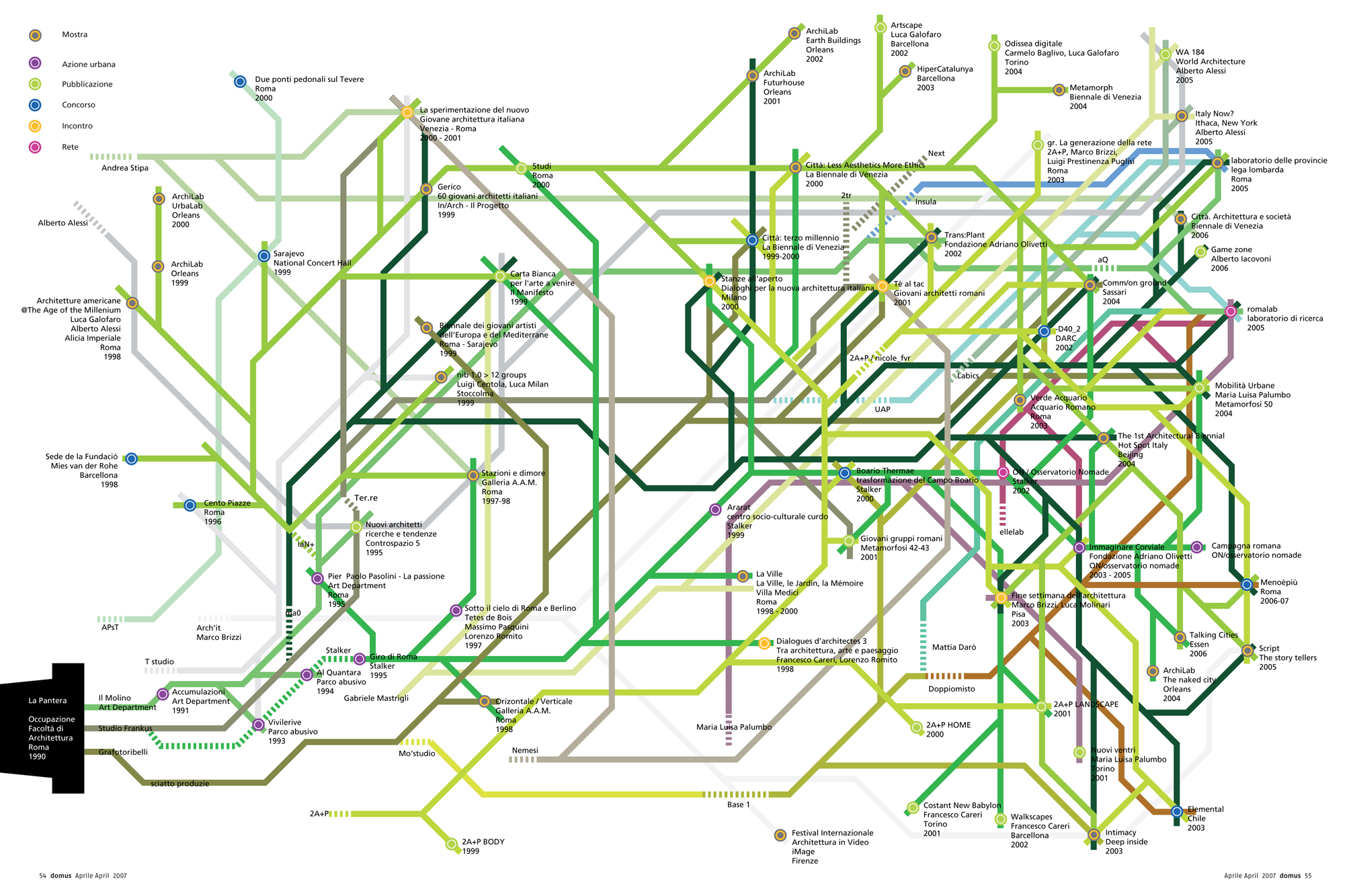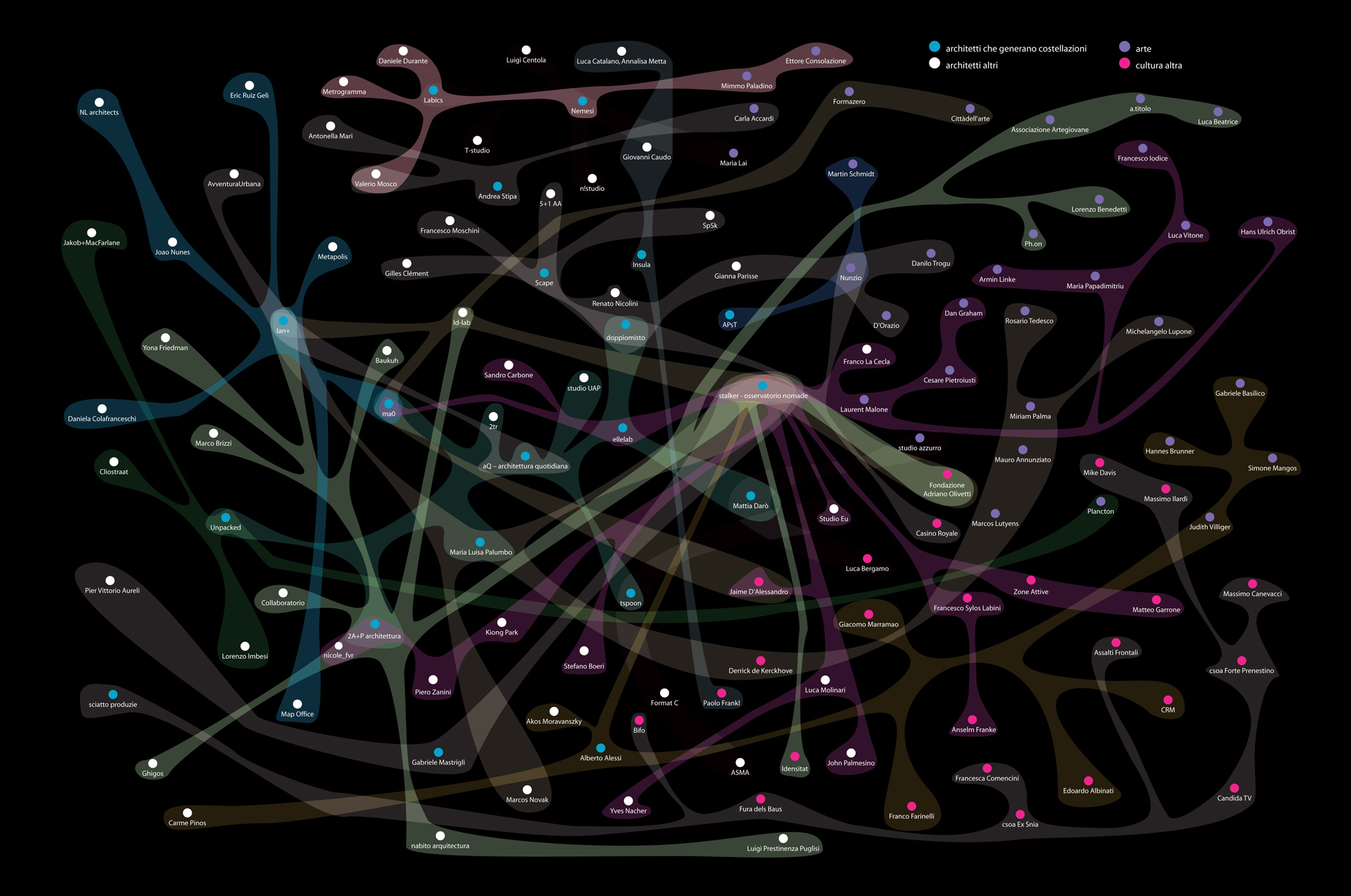"ROMA – BEIJING: CREATIVITY MAPS"
Esperanto, special issue of DOMUS, n. 902
Type Editorial project—maps and diagrams
Authors 2A+P Architettura (Gianfranco Bombaci, Domenico Cannistraci, Pietro Chiodi, Matteo Costanzo, Valerio Franzone)
Publisher Editoriale Domus, Milan (Italy)
Issue Esperanto, special issue of Domus, n.902 (April)
Pages 52–58
Year 2007
Link Domus, n. 902 Esperanto on www.domusweb.it
Stefano Boeri, for the last issue of Domus he was Chief Editor, conceived a special issue with an editorial project narrated just by images: architectural drawings, diagrams, photographs, comic strips, diagrams, maps, and infographics. Various architects, artists, 2A+P Architettura, Alessandro Mendìni, Gabriele Basilico, Francesco Jodice, Philippe Starck, Didier Fiuza Faustino, Herzog & de Meuron, OMA, Salottobuono, Enzo Mari, Bruno Latour, Thomas Saraceno, Zaha Hadid, Andrea Branzi, Claude Parent, SANAA, Olafur Eliasson, Ronan + Erwan Bouroullec, Armin Linke, Beatriz Colomina, Frank O. Gehry, Gae Aulenti, Steven Holl, Sami Rinlala, Yona Friedman, Madelon Vriesendorp, Francois Roche, and Antonio Marras have been called to conceive special projects.
“Roma: Creativity Maps” (in parallel to “Beijing: Creativity Maps” developed by Domus China) is a research that investigates and describes the young most avant-garde contemporary architectural scene in Rome.
The project started with a series of interviews with some Roman-based architects and curators, looking for forgotten or unknown memories, documentation, and links: flyers, projects, books, articles, magazines, and videos started revealing new memories of different events and from different points of view. A wide net was going to be discovered, and it was made of Roman knots intertwining with national and international ones. What came out was a reality characterized by an operative and interdisciplinary approach, collaborations, and a DIY attitude. Different actors in various fields—artists, architects, anthropologists, philosophers, activists, curators, critics, politicians, and municipal managers—met starting from the university student revolt called La Pantera around 1989 and 1990.
The research is synthesized by four infographics:
- a city map showing the locations of the identified firms, groups, collectives, and individuals;
- a family tree diagram showing the cultural events that generated the identified architectural scene in Rome (from 1990 to 2007)
- a neural circuit-inspired diagram showing the collective intelligence, the connections between the various actors according to common projects and works;
- a Domus search page (Google-like) showing the main projects by the main identified architects.



